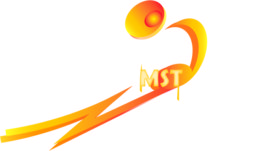
It happens to all athletes at one time or another. You are performing consistently well, then suddenly, inexplicably, the wheels just come off. The basketball player can’t find the hoop, the golfer gets a case of the yips, the baseball batter is swatting at air, the shooter just can’t connect with the target – even relatively easy shots. What happened? More importantly, how does the athlete recover his past form?
Invariably, the amateur athlete struggles with regaining her confidence in situations like this – why? Because she resorts to using conscious control of the execution of sport movements rather than allowing the sub-conscious to do its job of being responsible for the execution of the already-learned and honed skills. The conscious brain is painfully slow at controlling what should be very rapid and fluid movements when compared to the sub-conscious brain. Trying to “force the shot” simply does not work leading to more frustration and yet more conscious control of the execution process – a vicious circle! So, what is the athlete to do?
Dr. Wayne F. Martin, and Optometrist from Seattle Washington has a solution:

From the preface to his book, he reveals that “this book is about visual fitness”. He has found that “Due to faulty visual performance or habits, many promising athletes never rise to the level needed for championship play”. Further, understanding the visual process leads to more enjoyment from your given sport. The book goes into great detail about how to properly utilize one’s vision using primarily trapshooting and golf (but also touching on other sports) detailed examples and eye exercises.
So how does one stop consciously trying to fix the slump? Dr. Martin suggests by returning to the basics of how the eyes are properly used in the given sport. For shotgunning, this means properly selecting a visual pick-up point that allows the peripheral vision to do its job of detection of the target, and then allows hand off to the pursuit functions utilizing the sub-conscious’ to position the gun to center the target and destroy it. Doing so allows a return to the use of the natural eye / hand coordination under sub-conscious control instead of forcing the action via slow, conscious control.
I have tried this approach myself, both when in a slump, and when it seems that I am just a “tick off” on a given day at the range. While I, like most shooters generally pick a break point, gun hold point, and a visual pick-up point, I put extra emphasis on the selection of the visual pick-up point. That is the last conscious action that is performed prior to calling for the target. Keeping focused on that visual pick-up point helps to prevent conscious control of the shot. If possible, doing this on easier targets first can also build confidence back up to the level of competence.
So next time you are in a slump or struggling with shot execution, give it a try. You might just “see” your way out of that slump!
For those that are interested in Dr. Martin’s book, here is the amazon link:
Martin, W. F. (1993). An insight to sports: Featuring trapshooting and golf. Seattle, WA: SportsVision.
